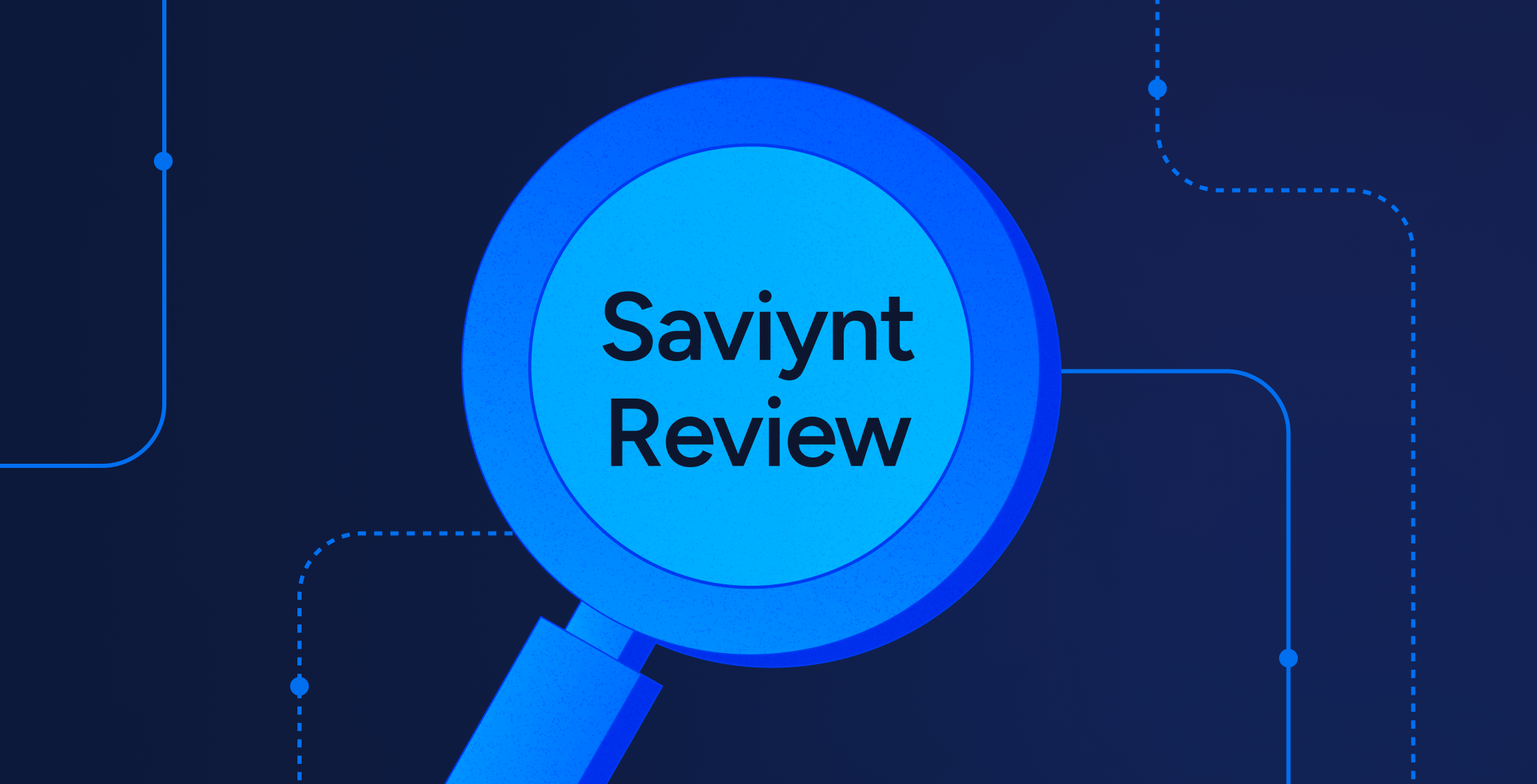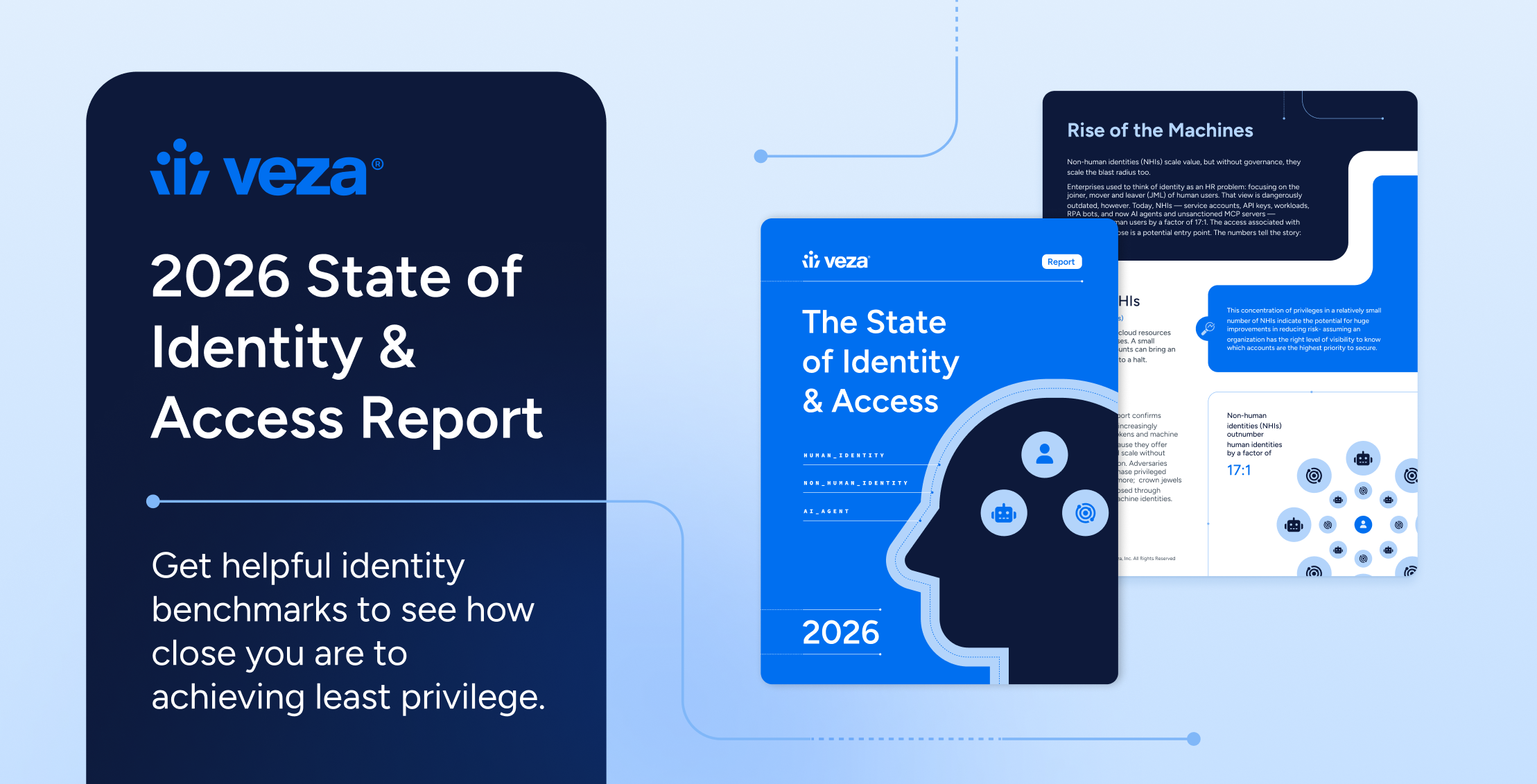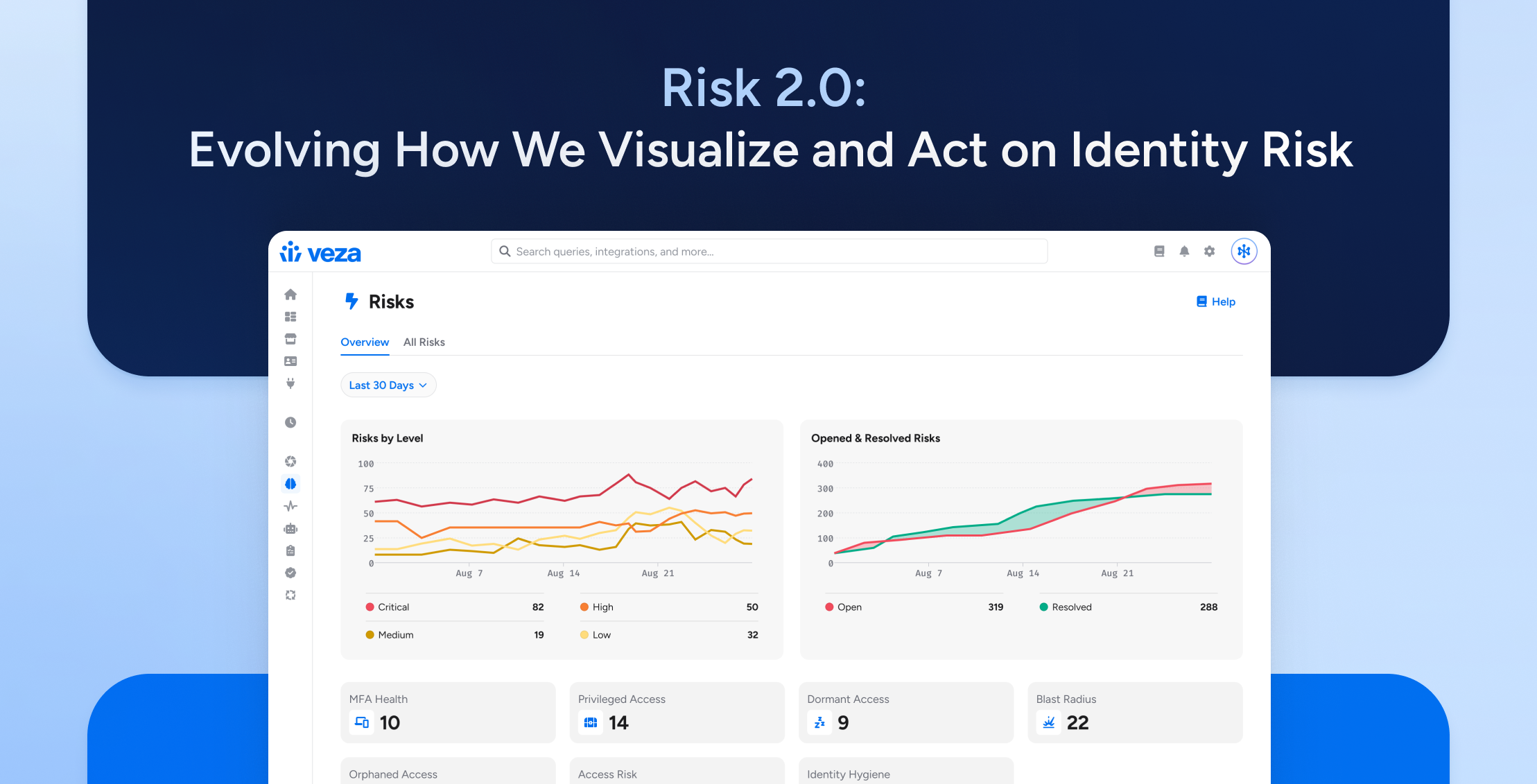
IBM’s 2024 Cost of Data Breach report found the global average cost of a data breach in 2024 reached 4.88 million, a 10% increase over last year and the highest total ever.
As cyberattacks grow more frequent and complex, organizations are turning to identity security platforms to reduce risk, secure sensitive data, and minimize the financial and reputational fallout of breaches.
Saviynt, a long-established player in the identity governance space, offers traditional identity security management. But as hybrid and multi-cloud environments become the norm, and the cost of data breaches continues to climb, legacy solutions may struggle to keep up.
This Saviynt review will take a look at the platform’s features, its pros and cons, and also some Saviynt alternatives that could be a better fit for your modern business’s security needs.
What is Saviynt?
Saviynt is an identity governance and cloud security platform designed to help enterprises manage and secure identities, applications, and data.
Saviynt Enterprise Identity Cloud is the company’s flagship offering—a platform for identity governance and administration (IGA).
IGA solutions help organizations manage the identity lifecycle, including support for provisioning, de-provisioning, and enforcing role-based access control (RBAC) policies. These capabilities are essential for maintaining compliance, securing access to sensitive data, and reducing the risk of data breaches across every aspect of complex enterprises.
Saviynt is a unified, modular platform. This means you can deploy specific features, such as privileged access management (PAM), Application Access Governance (AAG), and External Identity and Risk Management, while also using Saviynt’s core identity lifecycle and governance features available on the Enterprise Identity Cloud.
Saviynt Review
Let’s dive into some more specifics about Saviynt, its feature set, and its pros and cons.
Saviynt Features
Here are some key features of Saviynt:
- Identity lifecycle and access management: Saviynt automates most parts of identity lifecycle and access management, including onboarding and offboarding. It supports role-based access control (RBAC), which ensures that access is granted based on users’ job functions.
- Privileged access management (PAM): Saviynt’s Privileged Access Management solution helps organizations secure high-risk accounts with elevated access, such as system administrators or IT personnel. It enforces least-privilege access, monitors privileged sessions, and helps prevent unauthorized access to critical systems. PAM reduces the risk of insider threats, account misuse, and data breaches, making it a key component of zero-trust architecture and identity security platforms.
- Application access governance (AAG): Application access governance enables organizations to enforce segregation of duties (SoD) across enterprise resource planning (ERP) and business-critical applications like SAP, Oracle, and Workday. AAG limits user access to the roles and transactions they actually need, in line with regulatory standards such as SOX and GDPR.
- Cloud infrastructure entitlement management (CIEM): CIEM gives organizations multi-cloud access management, like permissions and entitlements across AWS, Azure, and Google Cloud. CIEM identifies over-permissioned accounts, enforces least-privilege access, and detects risky configurations. CIEM is essential for securing cloud workloads and maintaining cloud security governance across distributed environments.
- Third-party identity and access management: Saviynt lets you manage access for external users like contractors and vendors. It automates their onboarding process and ensures all external users have secure and compliant access to necessary systems and data. This reduces the risk of over-privileged external users, which is especially important for compliance frameworks like GDPR that require accountability for third-party data access.
- Compliance and risk management: The platform offers pre-built templates for regulations like SOX, GDPR, and HIPAA to improve identity governance maturity. You can use the platform to automate compliance reporting and get real-time risk management insights through analytics, SoD analysis, and audit-ready reports.
- Identity analytics and insights: Saviynt’s AI-powered analytics monitor user behaviour and access patterns to spot anomalies. This allows teams to act quickly when risky behaviour is detected and helps automate some of the more tedious aspects of access review and certification.
Pros
Here are some benefits of using Saviynt:
- Comprehensive identity governance and access management: Offers a wide range of IGA features to support compliance, provisioning, and policy enforcement.
- Customizable workflows: Flexible configurations for access requests, approvals, certifications, and reporting dashboards.
- Privileged access and SoD enforcement: Includes PAM and AAG capabilities for SAP, Oracle, and other critical applications.
Cons
While Saviynt offers a robust set of features for identity governance and administration, it also faces limitations similar to other traditional IGA tools, like:
- Complex implementation: Setup can be time-consuming and typically requires dedicated technical resources for successful deployment.
- Performance issues: Users report lag and slow response times
- Integration challenges with legacy systems: Saviynt’s complex integration process may require additional effort, especially with older or niche applications. Solutions built for modern cloud environments, like Veza, offer faster deployment and integrations with over 200 on-prem and cloud platforms.
Saviynt Pricing
Saviynt is significantly more expensive than other identity management solutions on the market. There are no predefined pricing tiers, and users can only request a custom quote, which can make upfront planning difficult.
However, according to AWS Marketplace, the annual cost of Saviynt Identity Cloud is:
- $100,800 for 1 to 50 users
- $156,240 for 51 to 100 privileged users
- $753,537 for 101 to 1,000 privileged users
- $800,000 for 1,000 privileged users
Modern cloud-first architectures—particularly businesses prioritizing faster deployment and lower total cost of ownership—are now looking to alternatives that are more flexible and scalable.
With lighter implementation requirements and faster time-to-value, platforms like Veza help reduce both upfront and long-term costs without sacrificing critical capabilities like real-time access monitoring, data governance, and Zero Trust enforcement.
Saviynt User Feedback
Saviynt user feedback highlights the platform’s features but also points to challenges like slow support and a steep learning curve. Customers often find the community helpful, although the stability of the product could use some improvement.
One of the users highlights that the product is feature-rich:
“The platform is very capable and configurable.”
However, a user also mentioned they had to struggle to get help from the support team:
“Saviynt KAMs have been supportive, but the organization behind is not. The result is unfortunately, a great lack of responsiveness of support, and that basic errors are not fixed or marked as enhancements for the future.”
Also, a Reddit user pointed out Saviynt’s poor user experience and stability concerns:
“Our company uses Saviynt (thousands of identities), but the experience is just bad. Our main concern, that the product is not stable; it is down from time to time, and sometimes it is slow. Seems like they don’t have sufficient monitoring in place, so these issues are reported by us and only then fixed.
User experience is suboptimal also. For example, it is not possible to share a link to an app to which access request has to be made. Instead a user have to navigate through the interface to the app. Fixing this for them is not an option, it is a “security concern”.
Another Reddit feed threw up a lot of criticism of Saviynt’s implementation, with one user saying:
“Saviynt left a poor taste in my mouth. In some ways, the tool seems very powerful, but there are weird issues with it that make it clear it’s essentially a trap. We lost access to logs in their test environment for weeks. Saviynt said they were looking into it, but never had answers about what was happening or a solution for us. One day, logs suddenly started appearing again. They couldn’t explain any of it.
The test environment was full of leftover data from previous companies. I have no idea why they couldn’t give us a clean slate…They had multiple different ways to create roles through the GUI. One worked as expected, and the other was full of glitches and strange behaviours. Those roles created this way had reverse jargon from the other, reliable way to make role,s and they also couldn’t be deleted once created.
Their support and product guys were nice, but there were times our big brain guy understood the product better than they did. They didn’t seem to know their product super well.”
Top Saviynt Competitors & Platform Alternatives
Comparing top solutions on the market is critical before you settle on an identity security solution. Here are some of the top Saviynt alternatives to consider:
1. Veza
Veza is an identity security platform that delivers Intelligent Access, empowering organizations to visualize, manage, and control access across their entire infrastructure. Unlike traditional tools that are limited to viewing user and group permissions, Veza analyzes effective permissions and enables companies to spot and address high-risk permissions and policy breaches.
Veza offers real-time monitoring of access to apps and data, allowing you to take a more proactive approach to security. You can configure Veza to automatically trigger a notification and create a ticket when it detects new access, allowing your team to quickly address potential threats and cut problems like privilege creep at the source.
Veza also offers AI capabilities. It uses natural language processing (NLP) to simplify complex data access for users and automates time-consuming tasks. This makes data searchable and usable by a wider range of users and reduces the barrier to understanding complex data security.
Key Features:
- Identity governance: Offers thorough oversight of user identities and access privileges.
- Privileged access monitoring: Secures privileged accounts, preventing unauthorized access to critical systems and data.
- AI capabilities: Veza’s AI simplifies complex data access with NLP, allowing a wider range of users to search and use the data in Veza.
- Real-time monitoring: Offers real-time insights into access behaviors and security vulnerabilities, allowing you to act quickly against potential threats.
- Cloud-native design: Built for cloud environments and provides scalable solutions without the complexity of managing on-premises infrastructure.
- Zero Trust Framework: Continuously validates user identities and access permissions to support Zero Trust security principles.
- Integration with over 200 platforms: Seamlessly connects with a range of on-premise and cloud services, SaaS applications, and data lakes, offering extensive coverage.
Saviynt vs Veza
Saviynt offers extensive IGA capabilities, particularly for organizations with complex compliance needs. However, it takes a more traditional approach focused primarily on managing human identities through roles and groups.
Veza Identity Security handles the evolving challenges of cloud access governance by focusing on Zero Trust security principles and delivering real-time access monitoring. It builds on traditional IGA and offers deeper visibility, broader integration, and enhanced automation.
Key differentiators include:
- Granular permissions: Unlike traditional tools that only focus on users and groups, Veza provides granular visibility into permissions down to data objects, tables, and individual resources.
- Ability to monitor all identity types: Tracks all identity types, including non-human identities like service accounts and IoT devices, which traditional IGA systems like Saviynt often don’t monitor.
- Broader coverage: Connects to on-premise applications, SaaS apps, and data lakes to deliver a unified governance perspective.
- Simplified language: Simplifies technical jargon by translating technical permissions into common business terms to make it easier for teams to manage access without system-specific expertise.
- Improved automation capabilities: Automates the monitoring, notification, and remediation of user access reviews and policy violations to ensure you’re always compliant.
2. SailPoint
SailPoint is an artificial intelligence (AI) and machine learning (ML)-powered identity security platform that automates access management for enterprises. It integrates with other systems in your tech stack and helps you view identities and centrally manage access rights.
It also helps automate various lifecycle management tasks like onboarding and offboarding users, as well as provisioning and de-provisioning.
Key Features:
- Identity governance: Offers tools that help manage user identities and access rights.
- Access question management: Streamlines access request processes like access requests, approvals, and provisioning access.
- Cloud-native architecture: Supports cloud-based deployment.
- AI-powered automation: Uses AI to automate identity management tasks and offers intelligent recommendations for access-related decisions.
- Recommendation Engine: Offers intelligent suggestions for requests and approvals.
3. Oracle Identity Governance
Oracle Identity Governance automates identity lifecycle processes to ensure users always and only have the right access at the right time. The platform offers built-in compliance features that make it easier to meet regulatory requirements while providing visibility into access rights. Oracle Identity Governance also offers analytics to help you identify and manage risks effectively.
Key Features:
- Identity lifecycle management: Automates lifecycle management processes, including onboarding and offboarding.
- Access certification: Automates periodic reviews to ensure compliance and validate user access rights.
- Integration capabilities: Integrates with various on-premises and cloud applications for unified identity governance.
- Compliance management: Helps comply with regulatory requirements through comprehensive reporting and audit capabilities.
- Delegated administration: Allows designated users to manage identity and access tasks, reducing the burden on IT.
4. Okta Identity Governance
Okta Identity Governance streamlines the end-to-end user lifecycle management process, including provision and de-provisioning. The platform’s centralized dashboard helps IT teams easily manage identities, track user activity, and maintain security compliance. It also includes centralized identity management, automated workflows for access requests, and real-time visibility into user activity.
Key Features:
- Automated provisioning and de-provisioning: Streamlines the onboarding and offboarding processes with automated user provisioning and de-provisioning.
- Self-service access requests: Users can request access to applications to reduce the burden on IT teams.
- Custom workflows: Creates custom workflows for specific access policies and compliance requirements.
- Real-time visibility: Offers real-time insights into user activity and access permissions to help maintain security and compliance.
- Integration with existing systems: Connects with existing applications and systems to improve user management and security.
More about Saviynt Identity Cloud
Let’s address some common questions about Saviynt to help with your review.
Is Saviynt a good security tool?
Saviynt is a decent security tool but has its limitations. It offers a solid feature set, a user-friendly interface, and advanced analytics. However, users have issues with complex, lengthy implementation, performance issues, poor customer support, and high costs.
Which is better: SailPoint, Saviynt, or Veza?
Veza is your best bet if you’re looking for comprehensive access governance capabilities and the ability to manage access across multiple platforms, including cloud environments, data lakes, SaaS apps, and on-premise applications. Veza’s ability to quickly and easily integrate into your existing cloud architecture accelerates your time to value.
That’s one of the many reasons why enterprises trust Veza to manage privileged access, automate access reviews and provisioning, secure SaaS access, govern data lakes, and monitor cloud environments.
Saviynt might be worth considering if you’re looking for a platform with single-tenant architecture that supports compliance across complex IT environments. However, complex implementation processes and long deployment times pose great challenges when it comes to integrating Saviynt with existing systems.
SailPoint is a traditional identity management platform that automates identity security processes and offers identity security coverage across an organization’s ecosystem. Unfortunately, traditional tools like SailPoint struggle in complex IT environments. They rely on data models designed for on-premise architectures and fully trusted networks, where identity governance is managed through groups and role names. This approach assumes all employees are listed in a single source of truth, like Active Directory, and that role definitions accurately represent actual permissions, leading to serious blind spots.
How long has Saviynt been around?
Saviynt was founded in 2011 and has been around for over 13 years.
Choose the best Saviynt alternative
Understanding the differences between platforms like Saviynt and Veza is critical in choosing the right identity security solution for your business. Both Saviynt and Veza offer valuable capabilities for identity security.
However, modern organizations looking for agile, real-time access governance might find Veza’s capabilities better aligned with their evolving security requirements in hybrid and multi-cloud environments.
For those who are just starting to explore identity security and want to understand its role in modern enterprises, learn the essentials of IAM.
If you’re evaluating different IAM solutions, compare Veza’s features with other platforms to see how it can address your unique security needs.
And when you’re ready to see how Veza can transform your identity security management processes, schedule a personalized demo to experience the power of real-time monitoring and Zero Trust security in action.
About the Contributors
This article was led by Quoc Hoang, Principal Product Manager for Competitive Intelligence at Veza, drawing on more than a decade of experience in enterprise software and market analysis to surface key insights around identity and access governance.
James McKenna and Madeline Hogan contributed editorial and content development support. James brought deep experience translating technical cybersecurity concepts into clear, practitioner-friendly narratives. Madeline provided structural and editorial oversight to ensure the piece remained focused, accessible, and relevant.





